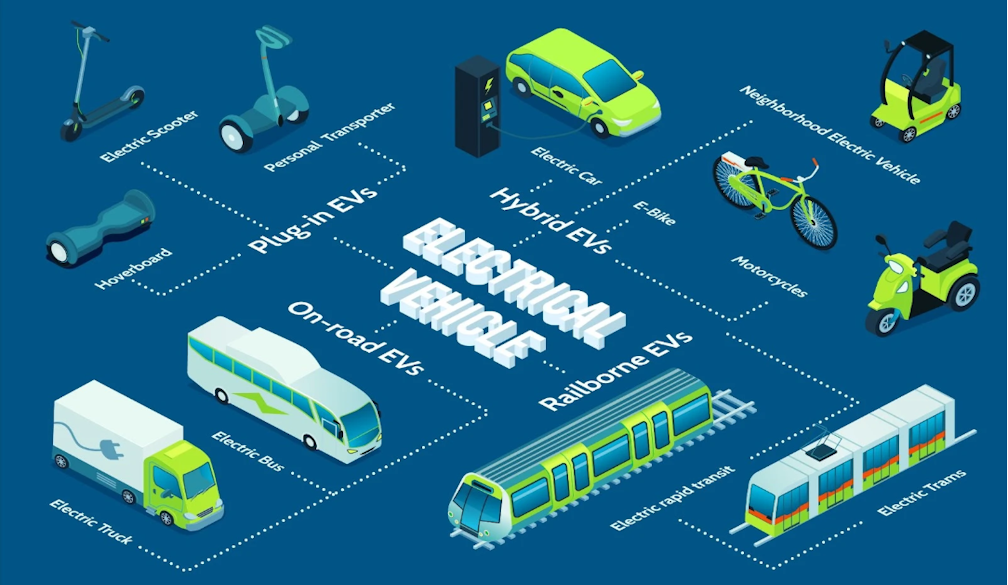Driving Profits and Purpose: How EV Loans Transform Business Performance

Just five years back, suggesting a fully electric business fleet would get you polite nods and quick subject changes. Now? Companies are racing to electrify their operations, and for good reason. The logistics firm that once dismissed electric delivery vans as "too risky" recently converted 40% of their fleet. What changed their minds wasn't environmental pressure—it was the numbers. Unlike typical car finance deals where businesses might need a negative equity calculator to assess their used vehicle trade-in quote, electric vehicle transitions often deliver immediate positive value from day one.
Understanding how electric vehicle financing impacts your business isn't just smart planning anymore. It's survival. Companies that figure this out early are already pulling ahead, while others scramble to catch up. The question isn't whether your business should go electric, but how quickly you can make it happen profitably.
Why Go Electric? The Money Actually Works Now
Forget everything you think you know about electric vehicles being expensive. Yes, they cost more upfront. No argument there. But that's like saying a house costs more than rent - you're missing the bigger picture.
Your Fuel Budget Will Thank You
Fuel costs are unpredictable and brutal. One month you're budgeting $3 per gallon, next month it's $4.50 and your CFO is having nightmares. Electric flips this script entirely.
Here's a real example from a client - small delivery outfit, nothing fancy. They were running about 60,000 miles per year on each van. Diesel was costing them roughly 30 cents per mile (and that was before the recent price jumps). After going electric, their energy costs dropped to about 8 cents per mile.
Do the math - that's over $13,000 saved per vehicle annually. For a 10-van fleet, we're talking $130,000 back in their pocket every year. That's not small change - that's someone's salary, or a down payment on expanding the business.
The beautiful thing? These savings start immediately. No waiting around for some long-term payoff that may or may not materialize.
Government Money is Still Available (For Now)
Tax incentives for electric vehicles aren't going away tomorrow, but they won't last forever either. Right now, between federal tax credits, state rebates, and sometimes local grants, you can knock serious money off your purchase price.
I worked with a landscaping company recently - two electric pickups, nothing crazy. Between federal and state programs, they cut their effective cost by about 25%. Made those monthly payments a lot easier to swallow.
But here's the thing - you need to plan for these incentives when you're setting up financing. Most people just buy the vehicle and hope to figure out the tax stuff later. That's backwards. Get your financing guy to factor in the incentives from the start.
Maintenance Headaches Basically Disappear
This one surprised me when I first started working with electric fleets. These vehicles just don't break down as much. Think about it - no oil changes, no spark plugs, no timing belts, no exhaust system repairs. The whole powertrain is simpler.
Your vehicles spend more time making money and less time in the shop. For any business where uptime matters (which is pretty much every business), this reliability boost is huge.
Beyond Just Saving Money: The Bigger Picture
Cost savings are great, but smart business owners know there's more to consider. Electric vehicles can actually help your business in ways that don't show up directly on the fuel bill.
Investors Actually Care About This Stuff Now
Environmental, Social, and Governance (ESG) ratings used to be something only the biggest corporations worried about. Not anymore. Even smaller businesses are finding that having good ESG practices helps with everything from getting loans to attracting customers.
Electric fleets are probably the easiest way to improve your environmental score. It's visible, measurable, and relatively straightforward compared to other green initiatives.
Companies with strong ESG performance tend to do better in the stock market and have easier access to capital. If you're planning to grow or need investor backing, having an electric fleet demonstrates that you're thinking ahead.
Your Brand Gets a Boost
When your electric delivery truck pulls up to a customer's business, it sends a message. Not a preachy environmental message - a message that you're innovative, forward-thinking, and probably good with money (since everyone knows electric vehicles save on fuel).
This matters more than you might think. Customers, especially B2B customers, increasingly prefer working with companies that have their act together on sustainability. It's not necessarily the deciding factor, but it certainly doesn't hurt.
Good Employees Want to Work for Forward-Thinking Companies
Here's something I didn't expect when I started working in this space - recruitment benefits. Good employees, especially younger ones, actually research potential employers' sustainability practices.
Having an electric fleet signals that your company is progressive and stable enough to make long-term investments. It's not going to single-handedly solve your hiring problems, but it definitely helps with attracting and keeping good people.
Getting the Money Right: Financing Your Electric Fleet
This is where a lot of businesses stumble. They focus so much on which vehicles to buy that they don't think through the financing properly. Big mistake.
Your Financing Options (They're Better Than You Think)
Traditional commercial auto loans work fine for electric vehicles, but there are specialized green financing programs that often have better terms. Some banks and credit unions are actively promoting sustainable business lending with lower rates for environmental initiatives.
Leasing is worth considering too, especially given how fast electric vehicle technology is improving. Lower monthly payments keep more cash in your pocket, and shorter lease terms mean you can upgrade to better technology as it becomes available.
The trick is understanding the total cost over time, not just the monthly payment. Sometimes the cheapest monthly payment isn't the best deal when you factor in incentives and tax implications.
Making Your Application Bulletproof
Lenders want to see that you've actually thought this through. Don't just walk in asking for money to buy electric vehicles. Show them your current fuel costs, project your savings, and demonstrate how this investment fits your overall business strategy.
Your business credit matters more here than with regular auto loans because the amounts tend to be higher. Make sure your financial house is in order before you apply.
Most importantly, show the lender you understand what you're getting into. Businesses that demonstrate knowledge about electric vehicles and realistic implementation plans get better terms than those treating it like an experiment.
Real Examples from Real Businesses
Let me tell you about SwiftFleet Transport. They're nothing special - 30 delivery vans, three-state operation, typical small business challenges. Fuel costs were eating them alive, and customers were starting to ask about their environmental practices.
They started small - 10 electric vans on their most predictable routes. Smart move. Eighteen months later, they'd cut fuel costs by 35% on those routes and reduced maintenance expenses by 20%. Customer satisfaction improved too, which nobody expected.
What made them successful? They did their homework. Analyzed their routes first to figure out which vehicles would work best as electric. Got their financing lined up with incentives factored in. Most importantly, they planned for charging infrastructure before the vehicles arrived.
Common Problems (And How to Avoid Them)
The biggest fear is charging infrastructure. Everyone thinks it's complicated and expensive. SwiftFleet solved this by keeping it simple - basic overnight charging at their depot using off-peak electricity rates. As they grew their electric fleet, they added faster charging options.
Incentive programs confuse people because they change all the time and have complicated rules. Get professional help navigating this stuff. The savings are worth paying someone who knows what they're doing.
Range anxiety is overblown for most business applications. Most commercial vehicles drive predictable routes well within electric vehicle capabilities. Do the math on your actual daily driving requirements before you worry about range.
Looking Ahead: What's Coming Next
Electric vehicle adoption isn't slowing down. Government policies are pushing toward electrification, technology keeps improving, and customer expectations are changing. Businesses that get ahead of this curve will be better positioned than those playing catch-up.
Infrastructure Planning That Makes Sense
You need to think bigger than just your current vehicles. Installing charging stations is about creating capacity for future growth, not just supporting what you have today.
Smart charging systems that use cheaper off-peak electricity can save significant money. Some businesses even make money by offering charging to employees or the public.
Staying Current Without Going Crazy
Electric vehicle technology improves fast. Battery capabilities, charging speeds, vehicle options - it all keeps getting better. Government policies change too.
You don't need to become an expert, but staying reasonably informed helps you time purchases and plan strategically.
Market demand for sustainable business practices is only going to increase. B2B customers are starting to prefer vendors with strong environmental commitments. Getting ahead of this trend gives you competitive advantages.
Bottom Line: It's Time to Make the Move
The evidence is pretty clear at this point. Electric vehicles deliver real financial benefits and strategic advantages that traditional vehicles can't match. Fuel savings, lower maintenance costs, tax incentives - the returns are immediate and substantial.
Smart financing makes electric vehicle adoption accessible for most businesses. Current incentive programs and technology maturity create good conditions for making the switch.
The question isn't really whether to transition to electric vehicles anymore. It's how quickly you can do it profitably. The businesses that move first get the best financing deals, the biggest incentive values, and the strongest competitive positioning.
Don't overthink this. Look at your fleet, crunch the numbers, explore your financing options, and get started. The longer you wait, the more money you're leaving on the table.









